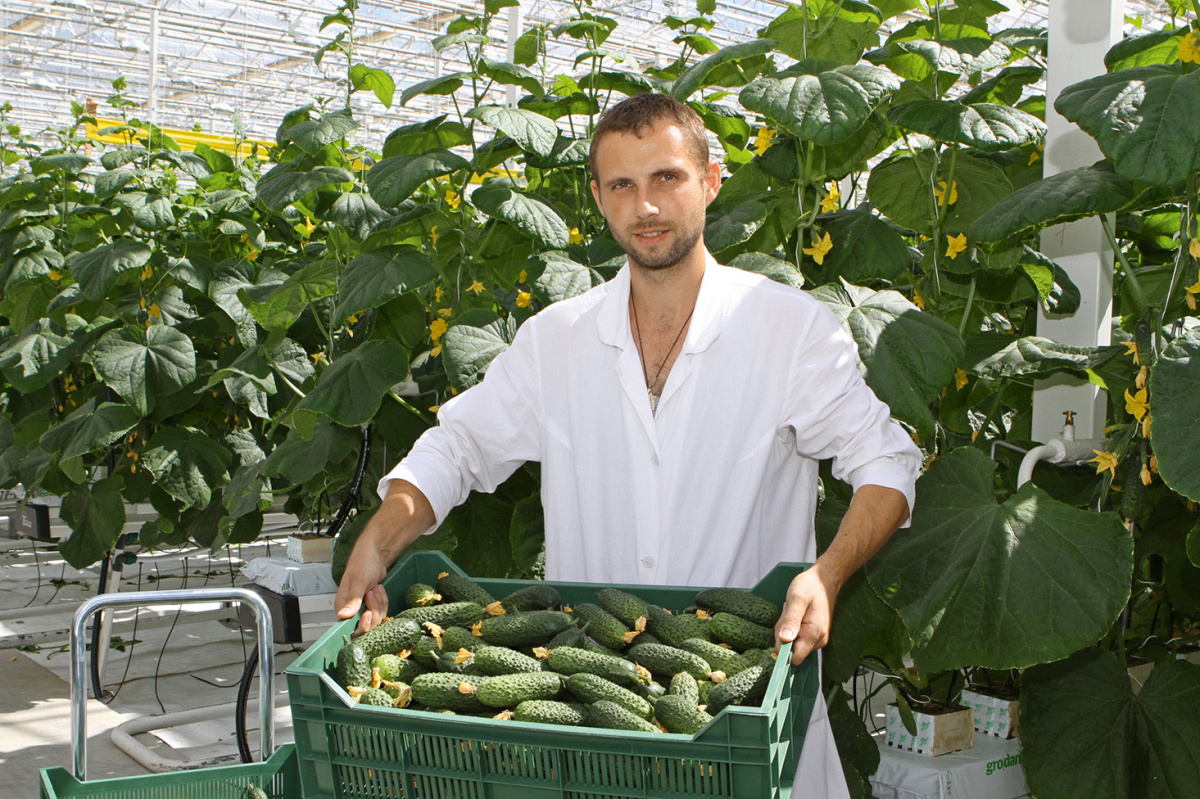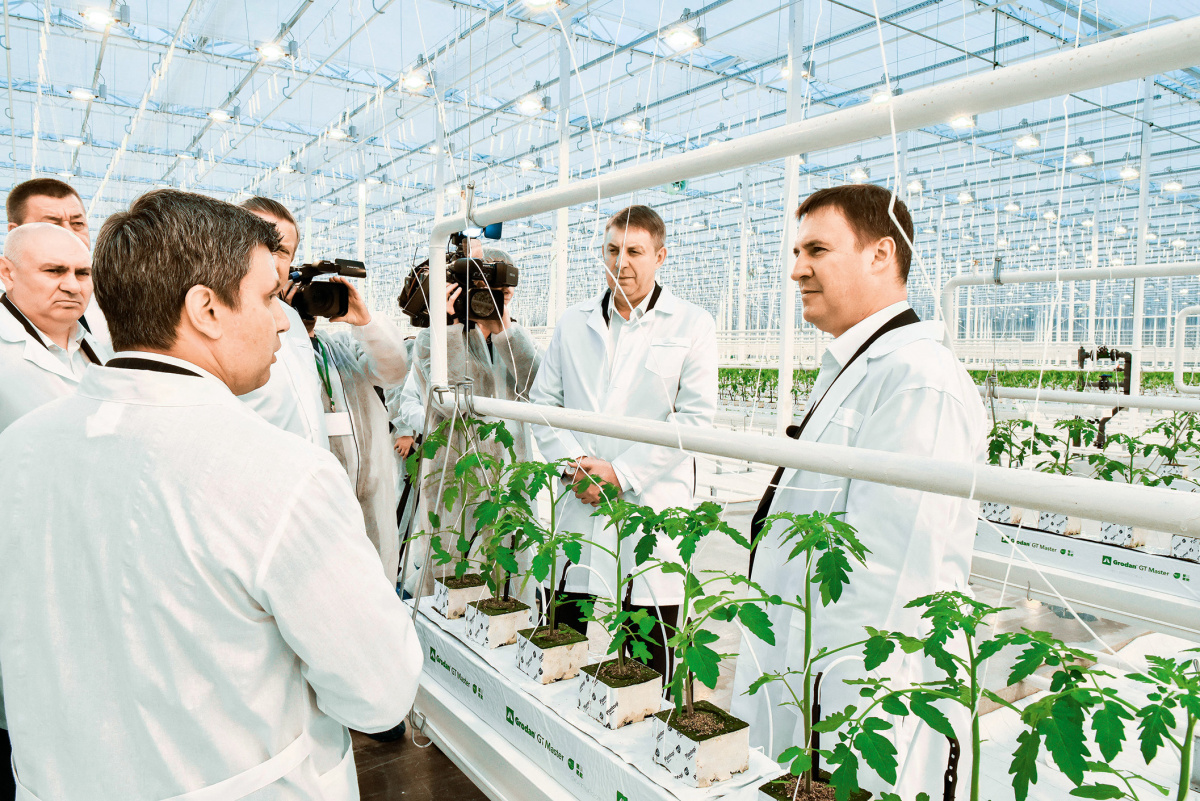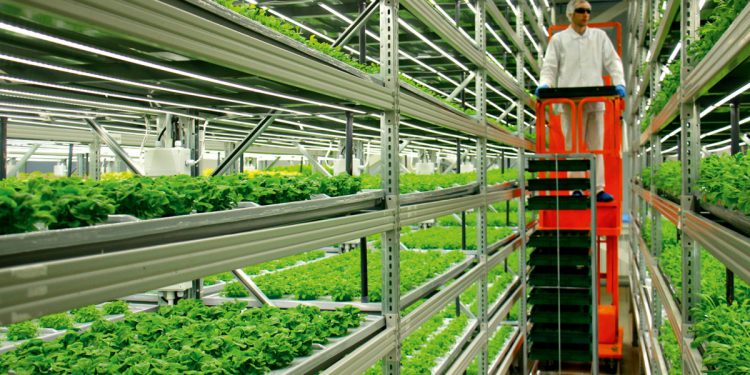In Russia, the production of greenhouse vegetables in nine months increased by 6.8%
The greenhouse industry in Russia has been actively growing since 2014, when it became clear that the country would have to live under sanctions pressure. The starting point was the adopted import substitution strategy for a number of items, designed for a five-year plan for the development of the agricultural sector. The vegetable growing of the closed ground was no exception. Over the past eight years, modern greenhouses have appeared in the country, and the counters have been filled with high-quality and environmentally friendly cucumbers and tomatoes of domestic production.
The starting incentive for the very rapid development of the greenhouse industry was the large-scale state support of Russian producers of indoor vegetables. Greenhouse complexes have appeared in almost all regions of the country. The largest are concentrated in the central regions, in Siberia and in the south of the country. The largest indoor vegetable production by area belongs to the St. Petersburg enterprise “Rost”, the total area of its greenhouse complexes totals 445 hectares. The capital greenhouse enterprise “ECO-Culture” occupies almost 305 hectares, closes the top three of JSC “Agrokombinat “Yuzhny” with greenhouse complexes with an area of almost 145 hectares. Today, the domestic vegetable growing of the closed ground continues to develop actively, annually demonstrates good growth, and greenhouse production is almost the most popular direction for a startup.
Steady growth. The production volumes of protected ground vegetables in Russia are steadily growing. According to the Ministry of Agriculture of Russia, 1.25 million tons have already been grown in greenhouses by mid-October 2022. This is 6.8% more than in the same period last year. Greenhouse cucumbers have already been harvested 725.4 thousand tons (growth — 7.7%), tomatoes — 502.9 thousand tons (growth — 7.4%). The leading regions in terms of greenhouse vegetable harvest are Lipetsk, Moscow, Volgograd, Kaluga, Belgorod Regions, Krasnodar and Stavropol Territories, the Republics of Karachay-Cherkessia, Tatarstan and Bashkortostan.
They became the leaders. Today, the Lipetsk region is leading in terms of greenhouse vegetable harvesting. As of mid-October, over 123 thousand tons of greenhouse vegetables and green crops were harvested in the region. Growth is over 17%.
“The current harvest of cucumbers in the region has already amounted to 61.6 thousand tons, 59.9 thousand tons were harvested last year,” the head of the Lipetsk region Igor Artamonov reports. — Tomatoes were harvested about 60.6 thousand tons, which is a third more than last year (44.4 thousand tons). In addition, 3.8 million pieces of lettuce (650 tons) have been collected, which has just begun to be grown in the region.”
In second place are the greenhouses near Moscow. According to the regional Ministry of Agriculture, 66 thousand tons of vegetables were harvested in the Moscow region in January — June 2022 — this is 10% more than in 2021 on the same date. By the end of 2022, it is planned to harvest 122 thousand tons of vegetables.
According to the press service of the head and Government of Karachay-Cherkessia, in 2022 it is planned to increase the yield of vegetables of protected soil by a quarter – this is almost 50 thousand tons of vegetables. In comparison with 2021, the growth will be 26%.
Over the past five years, the production of protected ground vegetables in the Kaluga region has increased fourfold. Last year, 67.6 thousand tons of vegetables were harvested here, this year it is planned to increase their production to 72 thousand tons. Stavropol region received more than 80 thousand tons of vegetables (9% more than in the previous year): more than 17 thousand tons of cucumbers, 64 thousand tons of tomatoes and 284 tons of other vegetables, including green crops.
Krasnodar Krai is also one of the top ten regions of Russia in the cultivation of vegetables in the closed ground. “Since the beginning of the year, our farmers have already grown 53 thousand tons of products, which is 4.5% more than in the same period last year,” says the governor of the Krasnodar Territory Veniamin Kondratiev. — Kuban remains one of the main producers of greenhouse vegetables in Russia. Today, 11 large greenhouse complexes with a total area of about 240 hectares are operating in the region.”

The doctrine is fulfilled by 90%. In 2022, Russia can achieve the indicators of the Food Security Doctrine for vegetables and melons.
Dmitry Patrushev, Minister of Agriculture of the Russian Federation, reported on the implementation of the Food Safety Doctrine at the government hour in the Federation Council. “About 5 million tons of open-ground vegetables are expected, and about 1.6 million tons will be produced in greenhouses. Such production volumes will fully meet domestic needs and develop export supplies,” the head of the department stressed.
“Every year domestic vegetable growers increase production volumes,” said Oksana Lut, First Deputy Minister of Agriculture of the Russian Federation at the international exhibition Global Fresh Market: Vegetables & Fruits. — This year, we predict that the harvest of vegetable orchards in farms of all categories will be about 16 million tons (in 2021 — about 15 million tons). Such results can make it possible to reach the threshold value of the Food Security Doctrine at the level of 90%. The greenhouse vegetable growing sector is currently showing the greatest dynamics — it is expected that this year the production in the closed ground will update the record and reach 1.6 million tons. The growth of harvests contributes to the reduction of import volumes, the development of export activities and ensuring a stable price situation. This year there is a decrease in selling prices for a wide range of vegetable products: potatoes, cabbage, carrots, onions, table beets, cucumbers and tomatoes. And the Ministry of Agriculture of Russia will continue to support the industry, stimulate investment activity and create the necessary conditions to protect the domestic market.”
In order to maintain the height gained, the Ministry continues to support production even in those positions where the necessary values of the doctrine have been achieved. For this purpose, a serious state support platform has been created, affecting the entire production cycle.
A wide range of state support measures is aimed at the development of indoor vegetable growing. Preferential investment loans and incentive subsidies are provided for enterprises. In addition, since 2022, a mechanism for compensating part of the costs for the construction of greenhouse enterprises in the regions of the Far East has been in effect.
The topic of food security of Russia and the world became almost the main one at the last Russian agro-industrial exhibition “Golden Autumn”-2022.
Russian Prime Minister Mikhail Mishustin noted that this year Russia will achieve the indicators of the Food Security Doctrine for cereals, beets, sugar and a number of other crops. “It is already clear that we will have a record grain harvest,” the head of government noted. — There are significant achievements in other agricultural crops, including oilseeds. We also see successes in the production of fruits, which are expensive and difficult to grow in our climate. But we expect a record — over 1.5 million tons of fruits and berries. A serious contribution to this is made by a set of state support measures for greenhouse farms.”
For security purposes. As part of the amendments to the federal law “On the Safe Handling of Pesticides and Agrochemicals” in 2020, in terms of improving state control (supervision), a provision on the Federal State Information System for Traceability of Pesticides and Agrochemicals (FGIS) was introduced in Article 15, which is designed to ensure that batches of pesticides and agrochemicals are accounted for when they are handled (imported to the territory of the Russian Federation, production (manufacture), storage, transportation (transportation), application, sale, neutralization, disposal, destruction and burial), and also for the analysis, processing of the information provided in it and monitoring their reliability.
The information contained in the FGIS is protected by the operator. The information is official and is considered a state information resource. In order to work at FGIS Saturn until September 1, 2022, all enterprises, including greenhouses using pesticides and agrochemicals, had to register with FGIS Saturn through the Cerberus system. The Rosselkhoznadzor performs the control and supervisory function for the safe handling of pesticides and agrochemicals. Instructions are posted on the websites of the Rosselkhoznadzor territorial administrations on the main service portals. Below are the phone numbers of the reception heads of territorial administrations. Greenhouse enterprises, in order to obtain a login and password, contact their local management office in case of questions during registration. Responsible departments of land or phytosanitary supervision are also identified in each territorial administration.
The material and technical future. At the June agricultural forum “Greenhouse Industry of Russia”-2022 in Moscow, much attention was paid to the current state of the industry as a whole, especially the development of the material and technical base. “Russian vegetable growing of closed ground: the state of the industry, development prospects, state support in the current conditions” — Arkady Muravyov, Vice-President of the Association “Greenhouses of Russia”, made such a report at the forum. “The stage of active construction of greenhouse plants, which began in 2014, continues in Russia today,” he said in his speech. — Since then, more than 1.5 thousand hectares have been built and vegetable production has increased fourfold — up to 1.6 million tons. Today, large greenhouse holdings plan to put into operation serious areas of new advanced complexes by the end of 2022. APH “Eco-culture” — more than 200 hectares, GC “Growth” — more than 70 hectares. A number of large complexes with an area of more than 80 hectares are at the design stage. However, the current situation in the economy also has a negative impact. For example, the construction of the Ryazan Roses shopping mall with an area of 6.4 hectares was suspended. Arkady Muravyov noted the advanced trends and directions that are beginning to bring additional real funds to greenhouse enterprises today. Among them is the opening of large horticultural enterprises, where flowers and vegetables are grown and immediately sold. The head of the association also recalled the rather successful implementation by Russian companies of the import substitution strategy for the production of equipment necessary for industrial greenhouses. “In the field of energy supply, Russian manufacturers, for example, are able to supply many effective solutions, such as automatic modular thermal power plants or hot—water three-way heat-tube boilers,” Arkady Muravyov is sure.
Long-term prospects. Today Russia ranks second in the world in terms of cucumber consumption (1.7 million tons) and eighth in terms of tomato consumption (3.5 million tons). Director of the Center for Agroanalytics Dmitry Aveltsov explained that the paradox today is that our country is only in the top 20 and top 30 in the world in terms of consumption of these vegetables per capita. At the same time, own production in Russia is not enough. Last year, Russia imported 460.2 and 55.2 thousand tons of cucumbers. However, the sanctions imposed against Russia have led to the impossibility of updating/expanding some technical capacities and the risk of banning the import of seeds, equipment and other important components.
“Today, the government of the country and relevant departments pay special attention to the development of mutual trade in agricultural products with countries such as Uzbekistan, Iran, Azerbaijan,” Dmitry Aveltsov continues. — The price situation in the vegetable market was reviewed, the problem of the risks for vegetable processors in connection with sanctions and the withdrawal of large processing companies from the market was separately noted.
According to our data, in Russia today there are 72 investment projects working in the direction of production of vegetables of the closed ground, the implementation of which covers the period 2021-2028. 62% of projects are already being implemented, the rest are planned for implementation in the near future. The total amount of financing of investment projects for 2022-2024 will amount to 45,2 billion rubles, including 1,7 billion will be allocated for the modernization of existing projects.”
Speaking about the forecast for greenhouse production volumes, Mikhail Semykin, director of the greenhouse direction of AGRISOVGAZ LLC, made an interesting forecast. According to him, self-sufficiency in vegetable products will grow to 72% in 2022. However, in order to completely replace imports, it is necessary to build even more greenhouse complexes, and this is especially true for the production of flowers, tomatoes, strawberries and hops.
Also, many questions were raised by such innovations as the cancellation of the reimbursement program for part of the direct costs incurred, a decrease in the marginality of products and an increase in the payback period of projects, an increase in prices for materials, components and logistics of new construction by 50-100%, as well as an increase in the cost of the wage fund and an increase in the energy dependence of enterprises, etc. To solve these problems, it is necessary to reduce the level of own participation in project financing programs to 7-10% of project costs, thereby lowering the threshold for entry into the industry for investors. It is also necessary to expand the state support programs in the areas of floriculture, hop growing, berry growing and reorient support measures to domestic manufacturers of equipment and components. It would also be nice to include objects with an area of 0.7 to 3 hectares of usable area in the program.
A source: https://vestnikapk.ru










